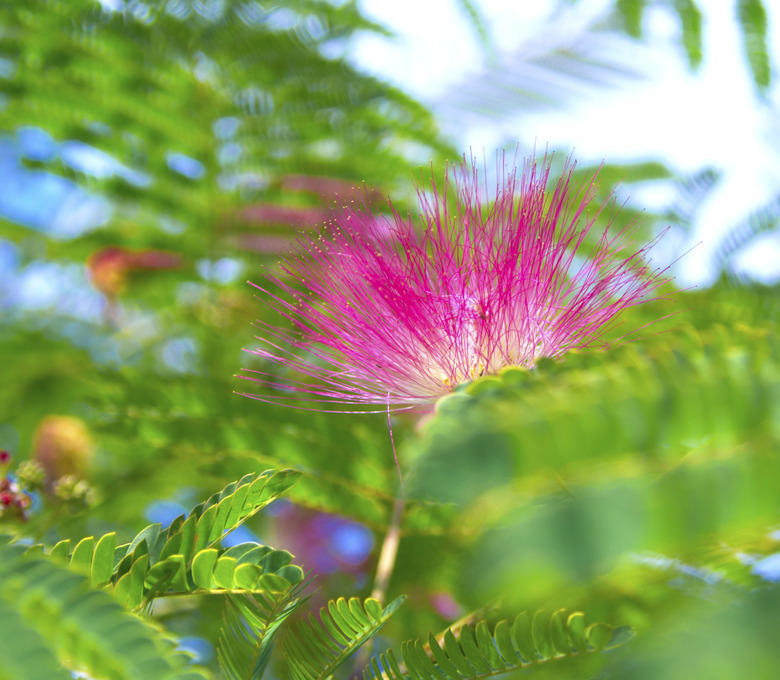List Of Leguminous Plants
Examples of leguminous plants include peas and beans, along with some species that are shrubs, vines and trees. A diverse group of plants, members of the family Fabaceae (formerly known as Leguminosae) are united by the fact that they produce fruit in a dry pod, which is called a legume. Many members of this family also work with bacteria called Rhizobium to fix nitrogen, converting nitrogen in the air into a form that is accessible to plant roots in the soil. Several members of this plant family are economically and nutritionally important crops, providing protein for both human and livestock consumption. This family of plants is the third largest among flowering plants, consisting of about 20,000 species.
List of Leguminous Crops
List of Leguminous Crops
The dry, edible seeds of some types of leguminous plants are also called pulses. All pulses are legumes, but not all legumes are pulses. Examples of pulses, crops that are grown for their edible seeds, include chickpeas (Cicer arietinum L.), lentils (Lens culinaris Medikus), dry peas (Pisum sativum L.), cowpeas (Vigna unguiculata L. Walp), and pinto, black and kidney beans (Phaseolus vulgaris L.).
Other leguminous crops are grown as livestock feed; the whole plant is typically harvested in these cases, which is referred to as forage. Examples of leguminous forage crops include birdsfoot trefoil (Lotus corniculatus), clovers (Trifolium spp.), alfalfa (Medicago sativa) and vetches (Vicia spp.). Some legumes are grown in crop rotations to add nitrogen to the soil; in this case, they are called green manure or cover crops.
Leguminous crops such as soybeans (Glycine max) and peanuts (Arachis hypogaea) are grown for both their high-calorie dry seeds and for the production of oils. Some legumes, like green beans (Phaseolus vulgaris) and sugar snap peas (Pisum sativum) are grown to be eaten as fresh vegetables.
Legume Trees and Ornamentals
Legume Trees and Ornamentals
While many legumes are staple crops across the globe, other species are cultivated for their ornamental value or are found growing wild in native ecosystems. Legumes have a wide range of growth habits and forms, and they can be found on every continent except Antarctica.
Herbaceous species like wild lupines (Lupinus perennis) decorate the roadsides in places like Colorado, while legumes like wild white indigo (Baptisia alba) are cultivated in gardens. Some legumes grow as vines, like American hog-peanut (Amphicarpaea bracteata), while others take the form of trees, like black locust (Robinia pseudoacacia) and eastern redbud (Cercis canadensis).
With species growing all over the planet, leguminous plants constitute about one-twelfth of all flowering plants. Found in places as diverse as alpine biomes to tropical rainforests, legumes have a wide diversity of leaf and flower forms, contributing to the rich biodiversity of the planet.
Importance of Legumes
Importance of Legumes
Legumes are an important source of nutrition for people and livestock all over the world. Rich in protein, minerals, vitamins and fiber, human consumption of pulses and other legumes has been linked to prevention of some diseases and associated with a healthy diet.
Often more affordable than other sources of protein, legumes are nutrient-dense and can be stored for consumption all year long. Associated with sustainable agriculture because of their ability to fix atmospheric nitrogen, legumes have a smaller carbon footprint than other crops and can reduce the need for chemical fertilizers when used in rotation with other crops.
Legumes are important to farmers and also play key roles in many natural ecosystems. The flowers of legumes like clovers and alfalfas provide nectar and pollen for pollinators like bees and moths, and leguminous species that grow in natural areas help make nitrogen available in the soil for neighboring plants.
References
- University of Florida: Meet the Plant "Fabaceae"
- University of Arizona: What Are Legumes?
- University of Wisconsin-Madison Arboretum: Gardening With Native Plants: Legumes in Summer Gardens
- Colorado State University Extension: Pulse Crops and Their Key Role as Staple Foods in Healthful Eating Patterns
Cite This Article
MLA
Sloane, Christina. "List Of Leguminous Plants" sciencing.com, https://www.sciencing.com/list-of-leguminous-plants-12003574/. 1 December 2021.
APA
Sloane, Christina. (2021, December 1). List Of Leguminous Plants. sciencing.com. Retrieved from https://www.sciencing.com/list-of-leguminous-plants-12003574/
Chicago
Sloane, Christina. List Of Leguminous Plants last modified March 24, 2022. https://www.sciencing.com/list-of-leguminous-plants-12003574/
